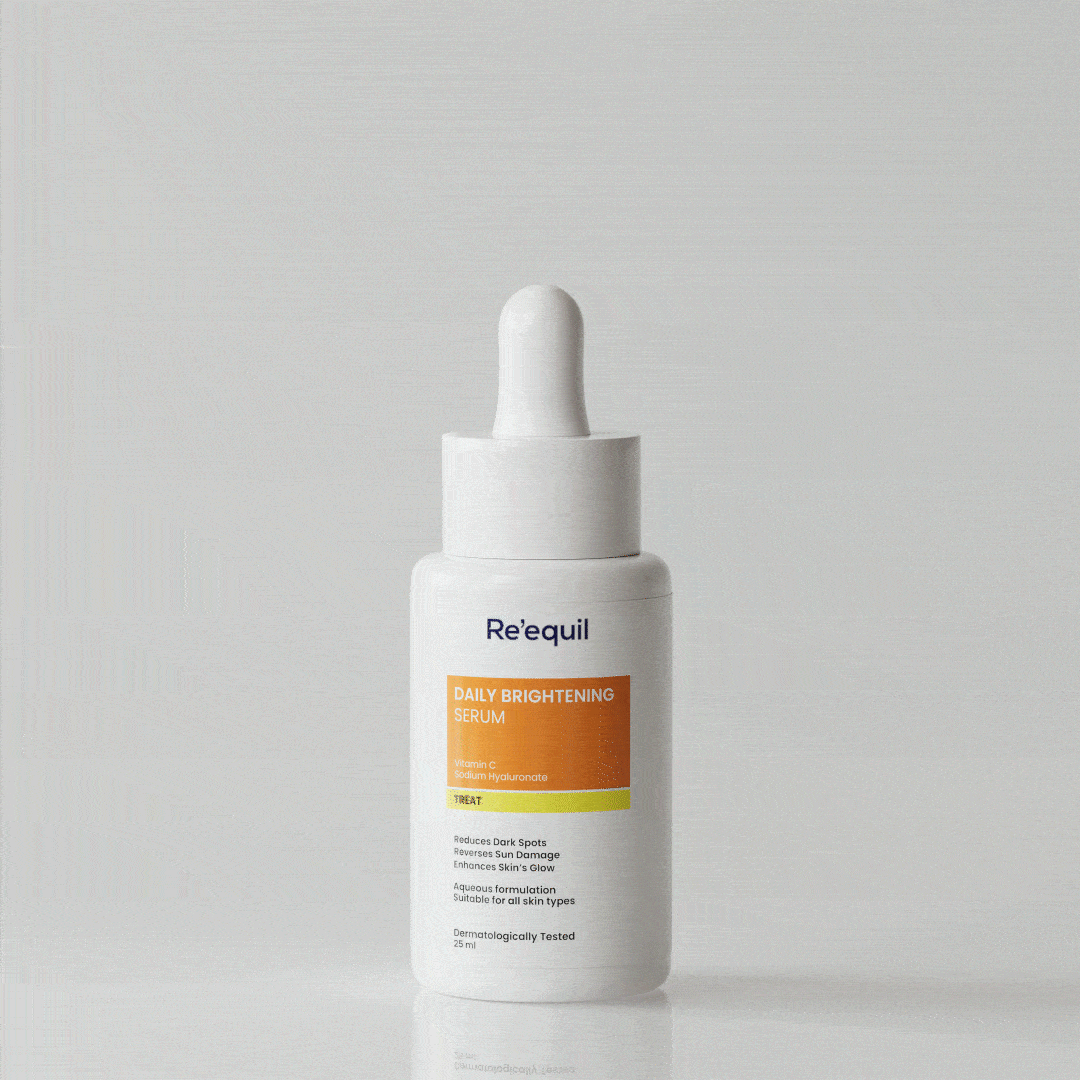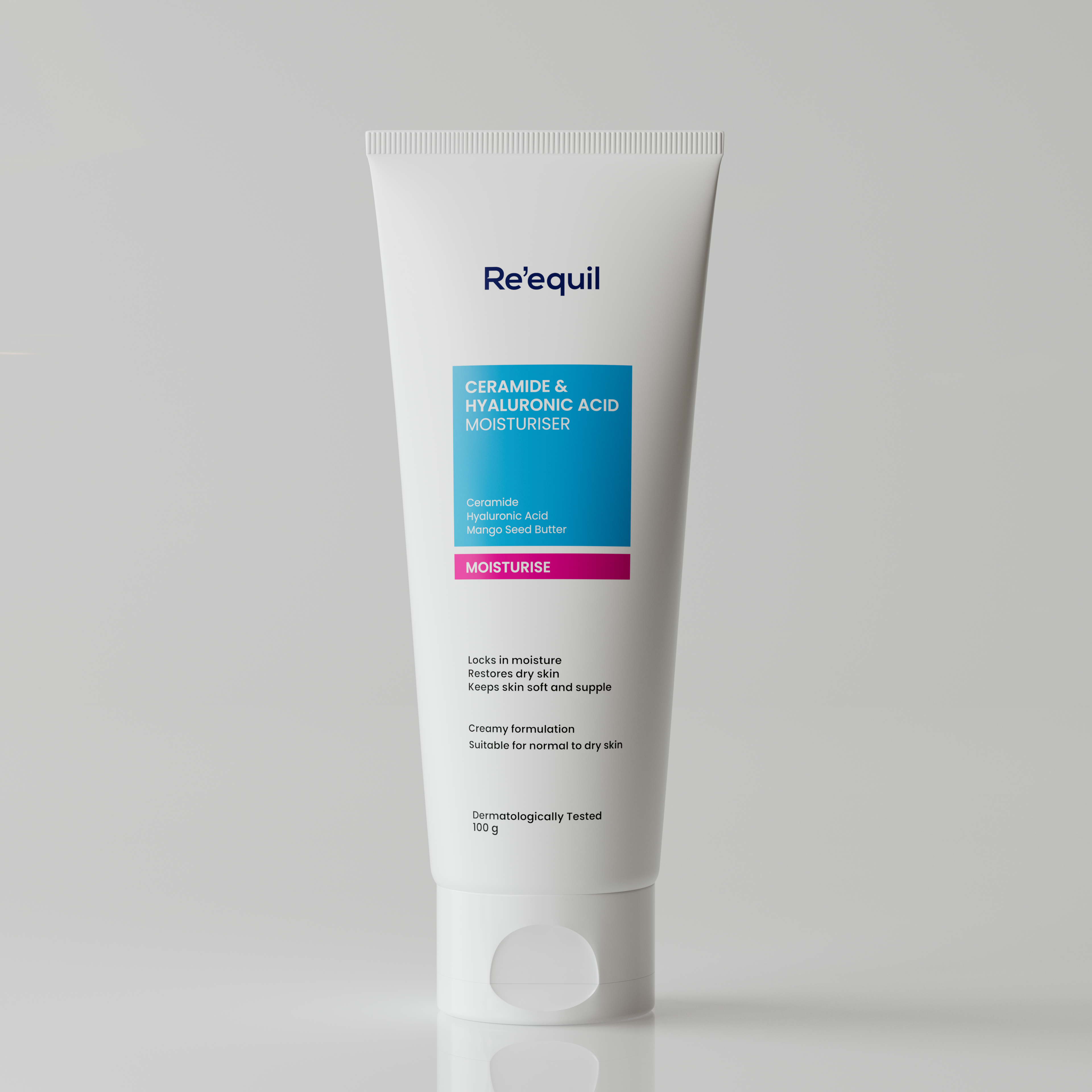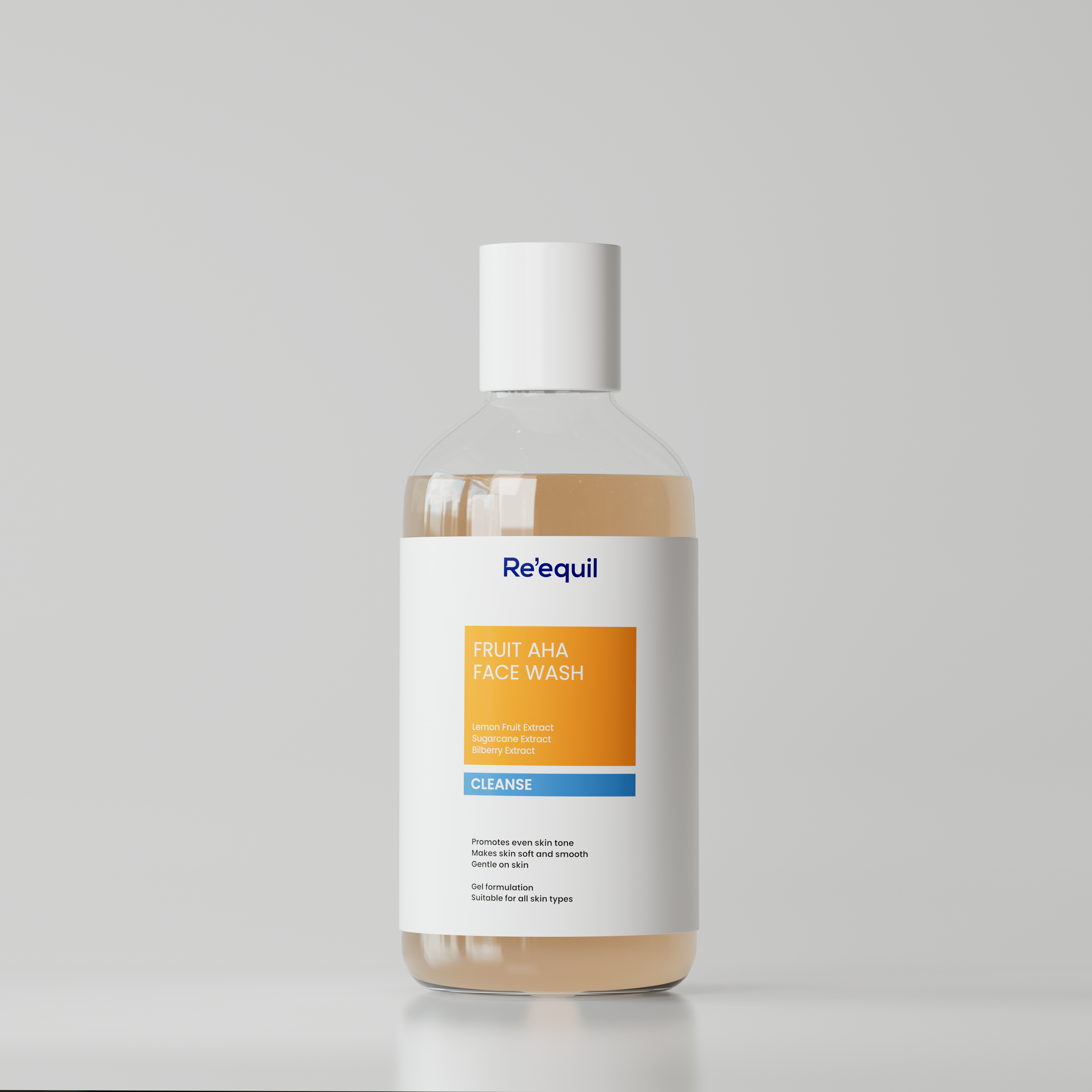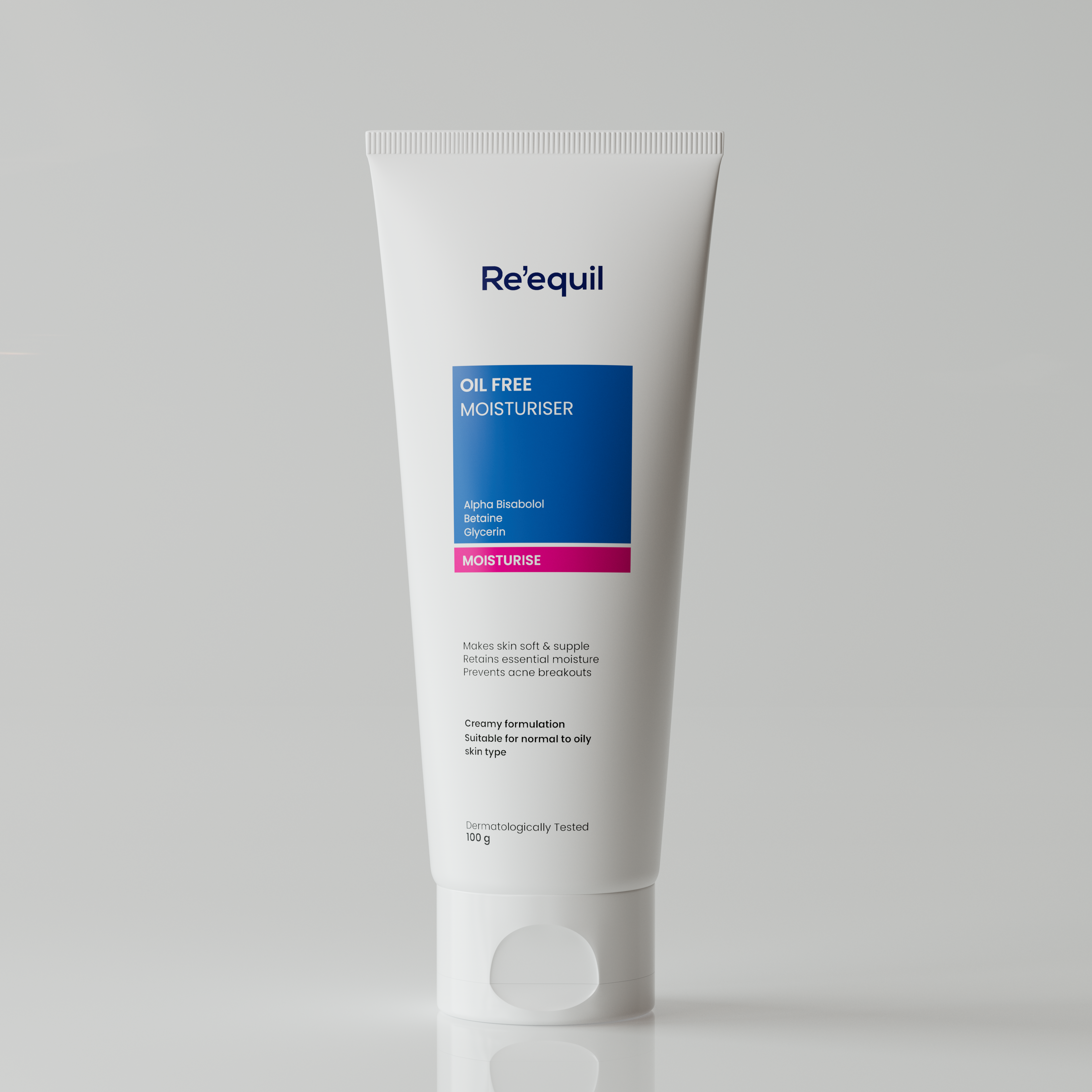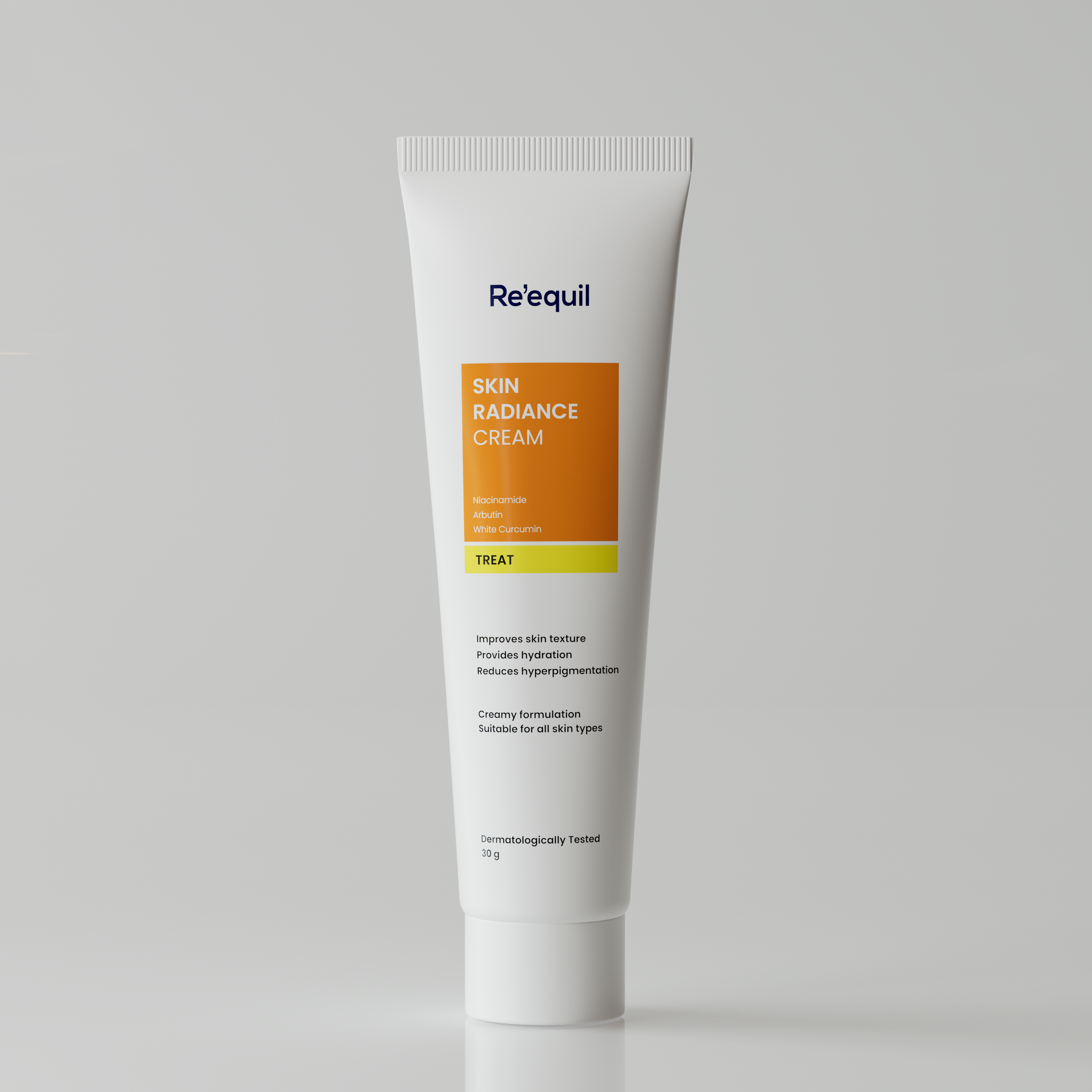Dry skin behind ears can be an uncomfortable and persistent issue, often causing itchiness, flaking and irritation.
While it may seem like a minor concern, neglecting this area can lead to worsening symptoms, including redness, skin cracks and infections.
If you are struggling with dry skin behind your ears, understanding the causes and effective treatment options can help restore healthy skin.
Why do you have dry skin behind your ears?
The skin behind your ear is thin, delicate and often overlooked in skincare routines.
Several factors contribute to dry skin behind ears, including:
1. Seborrheic Dermatitis
Seborrheic dermatitis is a leading cause of dry skin behind ears. It is primarily linked to an overgrowth of Malassezia, a yeast-like fungus naturally present on the skin.
While Malassezia is harmless in small amounts, certain factors can trigger its overgrowth, leading to inflammation and excessive skin shedding.
This condition is similar to dandruff and may also affect the scalp, eyebrows and skin behind the ears.
2. Eczema (Atopic Dermatitis)
Eczema weakens the skin’s barrier, making it prone to moisture loss.
If you experience dry skin behind your ears along with intense itching and redness, eczema may be the cause.
It can be triggered by allergens, weather changes and even stress.
3. Psoriasis
Psoriasis is a chronic autoimmune skin disorder that triggers the rapid overproduction of skin cells.
This results in the formation of thick, scaly patches that can appear on different parts of the body, including the scalp, knees and behind the ears.
If dry skin behind ears does not improve with moisturisers and mild treatments, and you notice persistent scaling, bleeding or widespread patches, consult a dermatologist.
4. Harsh hair products
Using shampoos and conditioners with sulfates, alcohol and artificial fragrances can strip natural oils, making dry skin behind ears even worse.
Residual shampoo that isn’t rinsed off properly may also contribute to irritation.
5. Weather conditions
Cold, dry air in winter and excessive sun exposure in summer can lead to dry skin behind ears, leading to flakiness and tightness.
Low humidity levels can further dehydrate your skin, making it flaky and sensitive.
6. Poor Hygiene
Neglecting to properly cleanse behind your ears can lead to a build-up of oil, dirt, sweat and other environmental impurities.
These elements can clog the pores, leading to blockages and irritations, which ultimately result in dry skin behind the ears.
7. Fungal or Bacterial Infections
A yeast overgrowth or bacterial infection can cause dry skin behind ears accompanied by redness, peeling and discomfort.
If you notice swelling or a bad odor, an infection could be the culprit.
8 ways to treat dry skin behind ears
Treating dry skin behind ears does not have to be complicated—a consistent and targeted approach can help restore moisture and prevent further irritation.
The key to healing and maintaining healthy skin lies in a combination of hydration, gentle cleansing and addressing underlying causes.
By recognizing triggers and following a well-rounded skincare routine with these tips, you can effectively manage dry, flaky skin behind the ears and prevent future flare-ups.
1. Moisturise daily
Hydration is key to preventing dry skin behind ears.
A fragrance-free moisturiser with ingredients like Ceramides, Hyaluronic Acid or Glycerin helps restore the skin’s protective barrier and lock in moisture.
While Ceramides are lipids that naturally occur in the skin and help to retain moisture, Hyaluronic Acid attracts water to the skin, ensuring that it stays hydrated and plump.
Glycerin, a powerful humectant, draws moisture from the air and helps keep the skin’s surface smooth and moisturised.
Regular use of a good moisturiser can significantly reduce the appearance of flakiness, itching, and dryness behind the ears.
Key ingredients to look out for: Glycerin, Ceramides, Alpha Bisbol, Hyaluronic Acid, Betaine.
2. Use a sulfate-free shampoo
Switching to a gentle, sulfate-free shampoo prevents dry skin behind ears caused by harsh cleansers.
Using a sulfate-free shampoo with certain nourishing ingredients (piroctone olamine, ivy leaf extract, Arctium Majus Root Water) not only prevents dryness but also promotes overall scalp health.
They are formulated without sulfates or other harsh chemicals, ensuring your scalp and the area behind your ears remain clean, hydrated and free from irritation.
Key ingredients to look out for: Shea Butter, aloe vera extract, Nasturtium officinale extract, hydrolysed pea protein
3. Cleanse gently
Harsh soaps or cleansers can disrupt the delicate skin behind your ears, stripping it of its natural oils and exacerbating dryness.
To maintain moisture balance, choose a mild, pH-balanced cleanser that gently removes dirt, sweat and impurities without causing irritation.
Key ingredients to look out for: Citric acid, Sugarcane extract, Zinc PCA
4. Exfoliate once a week
Using a mild chemical exfoliant, such as AHA (alpha-hydroxy acid) or BHA, gently dissolves the dead skin without causing irritation.
These exfoliants are especially effective in keeping the skin smooth and clear by promoting cell turnover.
Timely and balanced exfoliation not only helps reduce flakes but also enhances the absorption of moisturisers, leaving the skin feeling soft and refreshed.
Key ingredients to look out for: AHAs, BHAs, PHAs, Jojoba beads
5. Apply natural oils
Natural oils like coconut oil, jojoba oil, and almond oil are excellent choices for treating dry skin behind the ears due to their deep moisturizing and nourishing properties.
These oils are rich in fatty acids, antioxidants and vitamins that help repair and restore the skin's moisture barrier, leaving it feeling soft and hydrated.
Additionally, their anti-inflammatory properties help reduce irritation and redness, soothing the skin and promoting healing.
How to use: For best results, simply massage a few drops of your chosen oil behind your ears daily, preferably after cleansing and patting the area dry.
6. Stay hydrated & eat foods that are known to be good for skin
Proper hydration and a nutrient-rich diet are key to managing dryness behind the ears.
Dehydration can aggravate the condition, making the skin more prone to irritation and flakiness.
Drinking ample water throughout the day helps keep the skin hydrated from within, while also supporting its natural moisture balance.
Incorporating skin-friendly foods into your diet is just as important.
These foods not only help maintain hydration but also boost the skin's overall health, ensuring that dryness behind the ears is minimized.
Best foods for hydration: Fatty fish, avocados, nuts, seeds, and leafy greens.
7. Use a humidifier
By keeping your environment properly humidified, you create an atmosphere that supports your skin's natural moisture balance, helping it to stay soft and smooth.
Regular use of a humidifier can particularly benefit those who live in areas with harsh winters or have central heating, both of which tend to dry out the air.
Additionally, maintaining a consistent humidity level (ideally between 30-50%) helps to keep your skin healthy and prevent issues like dry, irritated skin behind the ears.
8. Consult a dermatologist if symptoms persist
If home treatments don’t improve dry skin behind the ears, consult a dermatologist. They can determine if you need prescription creams or other medical treatments.
Prevention tips for dry skin behind ears
This often-overlooked area can become irritated due to weather, allergies or harsh skincare products. The good news? A few simple habits can keep your skin hydrated and healthy. Here’s how!
Avoid scratching to prevent further irritation
Scratching dry skin can worsen irritation, cause micro-tears, and potentially lead to infection. Instead, soothe itchy areas by products specifically formulated for sensitive skin.
Wear a hat or scarf in cold weather to shield your skin
Cold, windy conditions can dry out your skin and lead to discomfort, especially behind the ears.
Wearing a protective hat or scarf not only shields your skin from the elements but also helps to maintain moisture levels, preventing windburn and dryness.
Avoid Hot Showers
Hot water can strip your skin of its natural oils, leading to dryness and irritation. Instead, opt for lukewarm water when showering to help maintain the skin’s moisture balance.
Frequently Asked Questions
1. Does skin inflammation from acne affect the skin behind the ears? If yes, how?
Ans. Yes, Acne isn’t restricted to the face – it can also develop behind the ears due to clogged pores, overactive sebaceous glands or bacterial infections.
Inflammatory acne can disrupt the skin’s moisture balance, leading to dryness and peeling.
The inflammatory response can damage the skin’s barrier, allowing moisture to escape and cause irritation as well as dryness behind ears.
2. How does stress impact dry skin behind ears?
Chronic stress triggers an increase in cortisol levels, which can disrupt the skin’s barrier function and impair moisture retention.
High cortisol levels are also linked to inflammatory skin conditions such as seborrheic dermatitis or eczema, which can worsen dryness and irritation behind the ears.
Stress management techniques such as meditation, exercise and adequate sleep can help reduce cortisol production and maintain skin hydration and health.
3. Can I use the same moisturizer behind my ears as I do for my face?
Yes, if the moisturiser is fragrance-free, non-comodogenic and suitable for sensitive skin, it can be used behind your ears. However, opt for lighter formulas that do not clog pores, as the skin behind your ears can be more prone to irritation.




